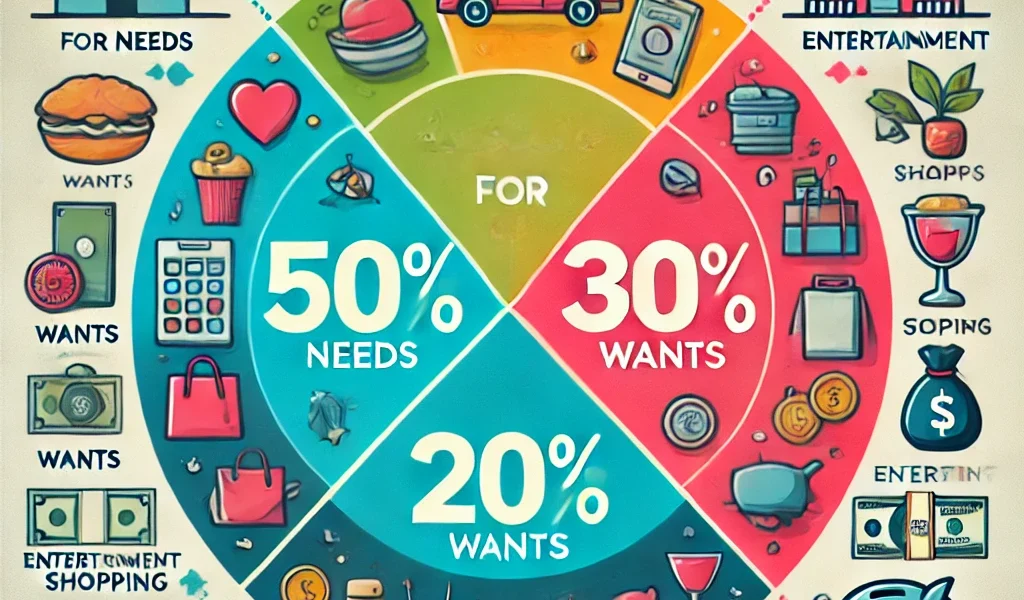Managing personal finances effectively is essential to achieving financial stability and independence. One of the most widely recommended budgeting techniques is the 50/30/20 Rule, a simple and powerful framework for organizing your money. Whether you’re saving for your future, tackling debt, or just trying to get your finances under control, this budget rule can help streamline your goals. Let’s dive deep into what the 50/30/20 rule is, how to implement it, and how it can lead you toward financial freedom.
What is the 50/30/20 Budgeting Rule?
The 50/30/20 Rule is a budgeting strategy that divides your after-tax income into three key spending categories:
- 50% Needs
- 30% Wants
- 20% Savings and Debt Repayment
By adhering to these simple proportions, you create a balanced financial plan that ensures you’re covering your essential expenses while still saving and leaving room for your desires.
Step 1: Allocate 50% of Your Income to Needs
“Needs” are the essential expenses that are necessary for basic living and survival. This category covers:
- Housing: Rent or mortgage payments, property taxes, utilities, and maintenance.
- Transportation: Car payments, insurance, fuel, or public transit costs.
- Food: Groceries, essential nutrition-related expenses.
- Insurance: Health, auto, life, and home insurance.
- Utilities and Bills: Phone bills, electricity, internet, and other vital services.
In this step, the focus is on the bare minimum that supports your daily life. Avoid including discretionary spending like dining out or entertainment here. If you find that your needs category exceeds 50% of your income, consider adjusting housing costs or finding more affordable utilities.
Step 2: Allocate 30% of Your Income to Wants
The “Wants” category includes non-essential purchases that improve your quality of life but are not absolutely necessary. This is the fun part of your budget, and it includes:
- Dining Out and Takeout
- Entertainment: Movies, concerts, subscriptions (Netflix, Spotify, etc.)
- Vacations and Travel
- Fashion and Personal Care: Shopping for clothes, accessories, and grooming.
- Hobbies and Leisure Activities: Fitness memberships, gaming, etc.
Wants are meant to enrich your life, but they are flexible. If your goal is to save more aggressively, you can reduce spending in this category temporarily. For example, cutting back on vacations or opting for home-cooked meals rather than dining out will free up more money for savings.
Step 3: Allocate 20% of Your Income to Savings and Debt Repayment
Finally, the most important category: “Savings and Debt Repayment.” This portion of your budget focuses on building wealth and securing your future. You should allocate 20% of your income to:
- Retirement Savings: Contribute to 401(k), IRAs, or other retirement funds.
- Emergency Fund: Build a safety net for unexpected expenses, like medical emergencies or job loss.
- Debt Repayment: Pay off high-interest credit card debt, student loans, or any other loans.
- Investments: Grow your wealth by investing in stocks, bonds, mutual funds, or real estate.
Putting money into savings, emergency funds, and investments is the foundation of long-term financial security. The earlier you start saving and investing, the better your financial future will be.
Tips to Make the 50/30/20 Rule Work for You
- Track Your Spending: Start by tracking your expenses for at least a month to see where your money goes. This helps in categorizing your spending accurately.
- Be Flexible: The 50/30/20 rule is a guideline, not a strict rule. You can adjust it to your needs based on your financial goals. For example, if you’re saving for a home down payment, you may allocate more toward savings temporarily.
- Automate Savings: Set up automatic transfers to your savings accounts or retirement funds so you prioritize saving before spending on anything else.
- Review and Adjust Regularly: Review your budget every few months. Life circumstances change, and so should your budget.
Why the 50/30/20 Rule is Effective
This budgeting strategy works well for most people because of its simplicity and balanced approach. Here are some reasons why it’s a popular choice:
- Simplicity: It’s easy to understand and implement, making it great for beginners.
- Flexibility: You can adjust your spending according to changing needs or financial goals.
- Promotes Savings: By dedicating 20% of your income to savings and debt repayment, it ensures that you’re building a solid financial foundation.
Final Thoughts: Take Control of Your Financial Future
Adopting the 50/30/20 budgeting rule is an excellent way to gain control over your financial life. It allows you to live comfortably, enjoy your wants, and save for the future—all while avoiding financial stress. Whether you’re planning to buy a home, pay off debt, or build an emergency fund, this rule helps you stay focused on your goals.
Remember, budgeting is a journey. Start slow, track your progress, and make adjustments along the way. Over time, with discipline and consistency, you’ll be on your way to financial freedom!




